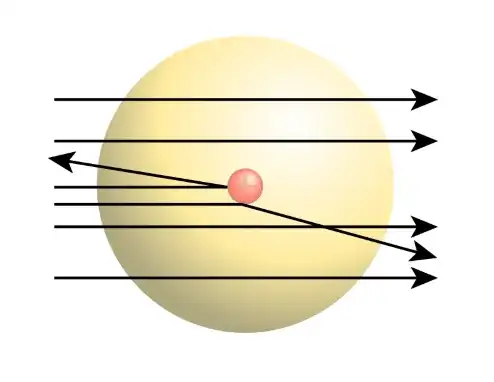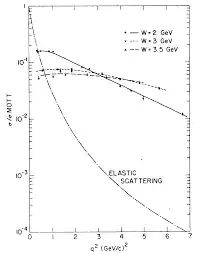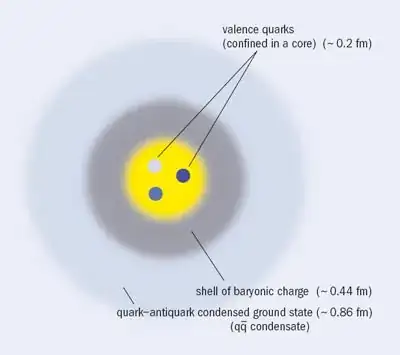Rutherford's scattering experiment of the atom is qualitatively convincing just by the detection of near 180 degree deflection of positively charged alpha particles when shot through the dense lattice of solid atoms,
An experiment based on the same principle is conducted using accelerated electrons passed through the dense proton lattice of low temperature liquid hydrogen.
(https://users.hep.manchester.ac.uk/u/ukyang/fpp2/dis/dis_lec1.pdf)
I am having trouble following the chart above.
(https://cerncourier.com/a/picturing-the-proton-by-elastic-scattering/)
1. What is being plotted on the x-axis, and what is plotted on the y-axis?
2. How does the three regression lines calculated from the detection prove that there are 3 constituents having differing charge sign and magnitude, within this large 3D repeating proton lattice of liquid hydrogen?


